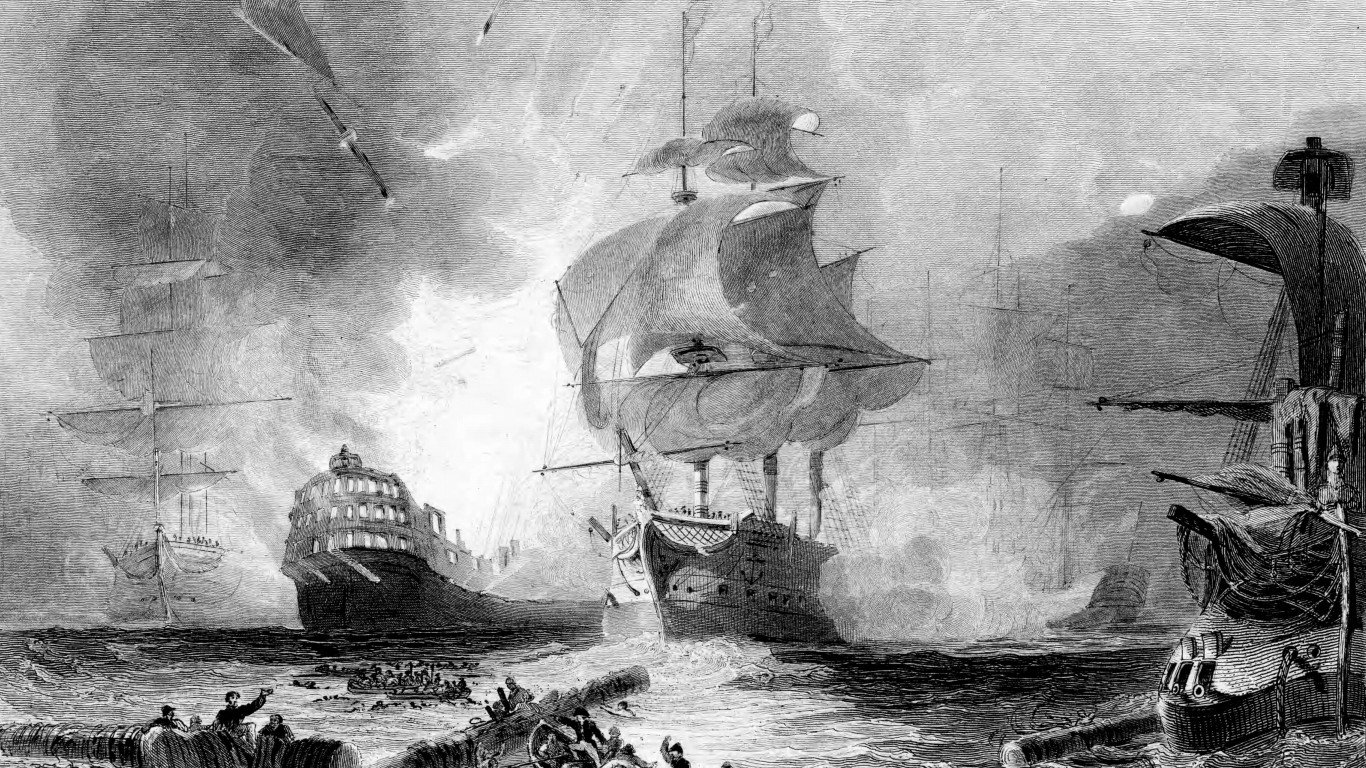

It isn’t immediately obvious how to classify naval disasters. Is it by the number of ships that went down? The size of the vessels destroyed? The number of casualties?
Some disasters involved more than one ship. Pearl Harbor is a good example. Eight of America’s battleships were disabled when the Japanese bombed the Hawaiian naval base on Dec. 7, 1941. In total, nearly 20 ships were damaged or destroyed, and over 2,400 Americans were killed. (These are the deadliest battles in U.S. history.)
Other U.S. naval disasters included just one ship. The Indianapolis, a heavy cruiser, delivered the first atomic bomb components for the bombing of Japan. A Japanese submarine sank it on June 30, 1945. Over 500 men died, many of them from shark attacks.
To find the worst disasters in naval history, 24/7 Wall St. reviewed records of major naval ships that were sunk during the course of wars. The worst disasters were based primarily on three factors: the number of ships destroyed. the number of people killed, and the strategic value of the ship or ships destroyed.
Some naval disasters happened during large sea battles. The huge Japanese battleship Yamato was sunk on April 7, 1945. Almost 2,500 Japanese sailors died. (This is the world’s largest warship.)
Not all of the naval disasters occurred in World War II. One of the greatest sea battles of all time was the Battle of Jutland in World War I. Fought between the German and British navies, one result was the destruction of the huge HMS Invincible. Between the British and German navies, over 8,000 men were killed.
Large sea battles have become much less likely given the development of modern weapons. Aircraft carriers, the largest ships in several navies, including the U.S., launch planes that attack targets hundreds of miles away. (This is how far the most powerful missiles can travel.)
Despite the fact that large naval battles are a thing of the past, there is still a chance that a large ship could be destroyed. One concern about modern navies is that they could be attacked from hundreds of miles away, by air or land.
Click here to see the worst disasters in naval history
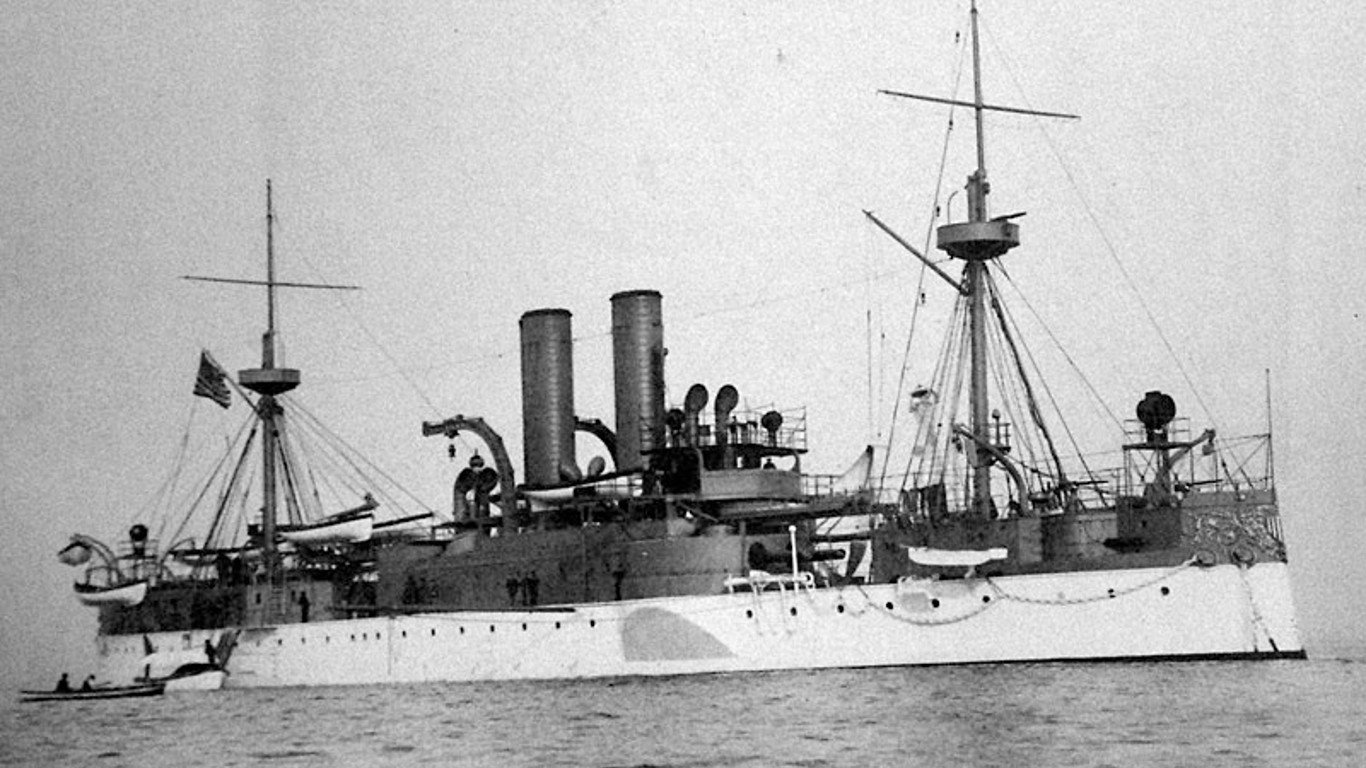
10. Sinking of USS Maine
> Ships: USS Maine
> Nations involved: Spain and US
> Date: Feb. 15, 1898
> Conflict: Pre Spanish-American War
The USS Maine, a battleship, blew up without warning in Havana harbor on Feb. 15, 1898, killing 266 men. The U.S. government claimed the USS Maine had been attacked by Spanish interests because of tensions between the two countries. Briefly thereafter, the U.S. declared war on Spain. The war eventually triggered the U.S. ownership of the Philippines and Puerto Rico.
[in-text-ad]
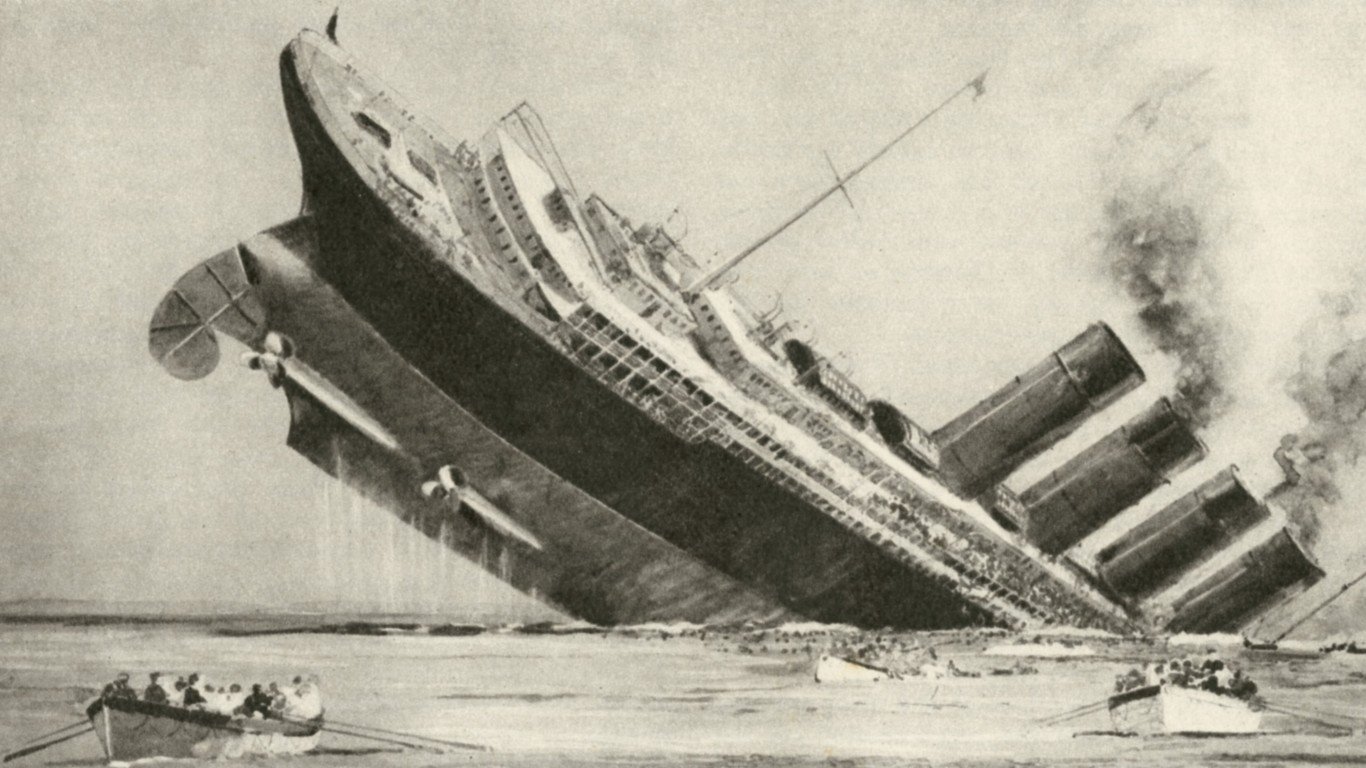
9. Sinking of RMS Lusitania
> Ships: RMS Lusitania
> Nations involved: Germany and UK
> Date: May 7, 1915
> Conflict: World War I
RMS Lusitania was sunk by a German U-boat on May 7, 1915. A total of 1,198 lives were lost. Was this a naval disaster? RMS Lusitania was a passenger ship, which the Germans claimed it carried British munitions. Among the major repercussions of the sinking of Lusitania is that many of the passengers were American. The event pushed America closer to joining the war.
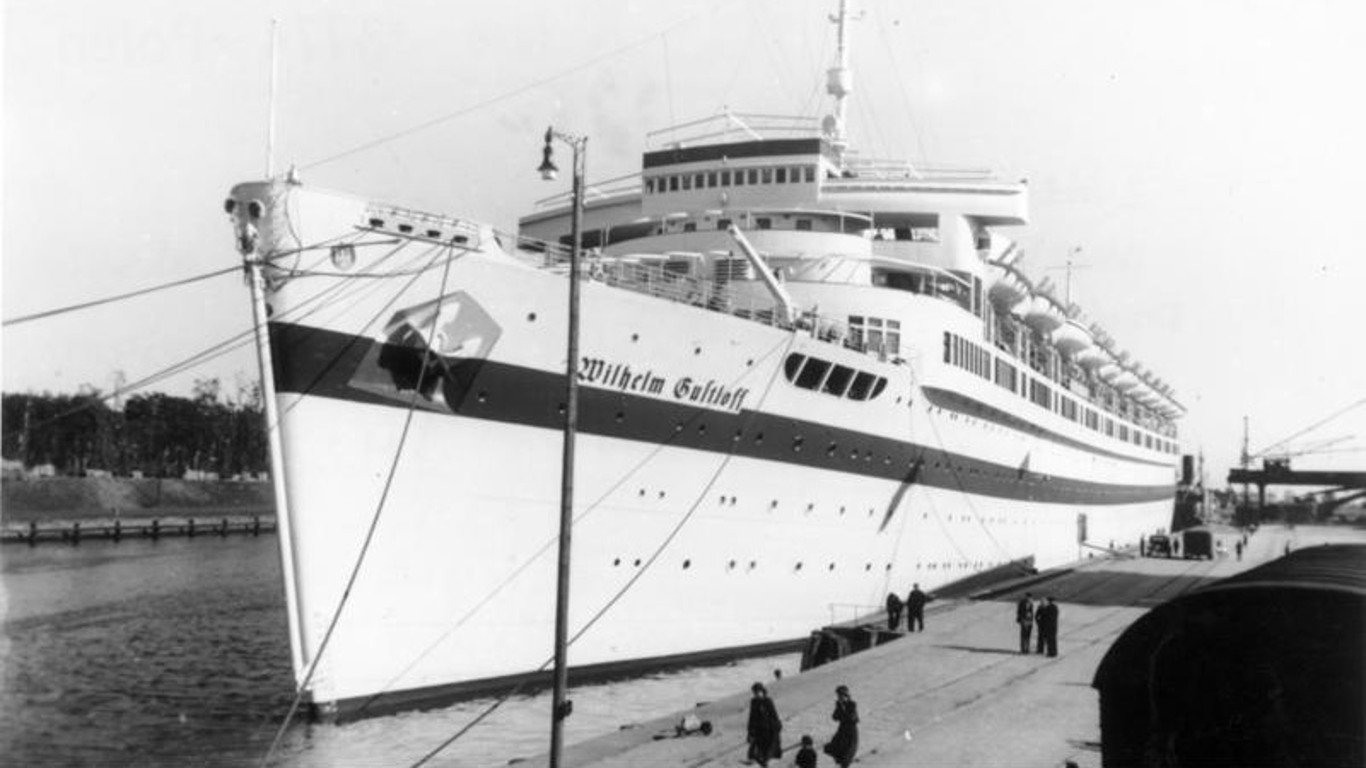
8. Sinking of MV Wilhelm Gustloff
> Ships: MV Wilhelm Gustloff
> Nations involved: Germany and Russia
> Date: Jan. 30, 1945
> Conflict: World War II
The sinking of German military transport MV Wilhelm Gustloff by a Soviet submarine on Jan. 30, 1945, was probably the deadliest sinking of a single ship. Over 9,000 people were killed, half of which were children. Many of the people onboard were fleeing the advancing Soviet army. Those onboard were people from several nations, including Poland and Croatia. Prior to the war, the MV Wilhelm Gustloff was a cruise ship.
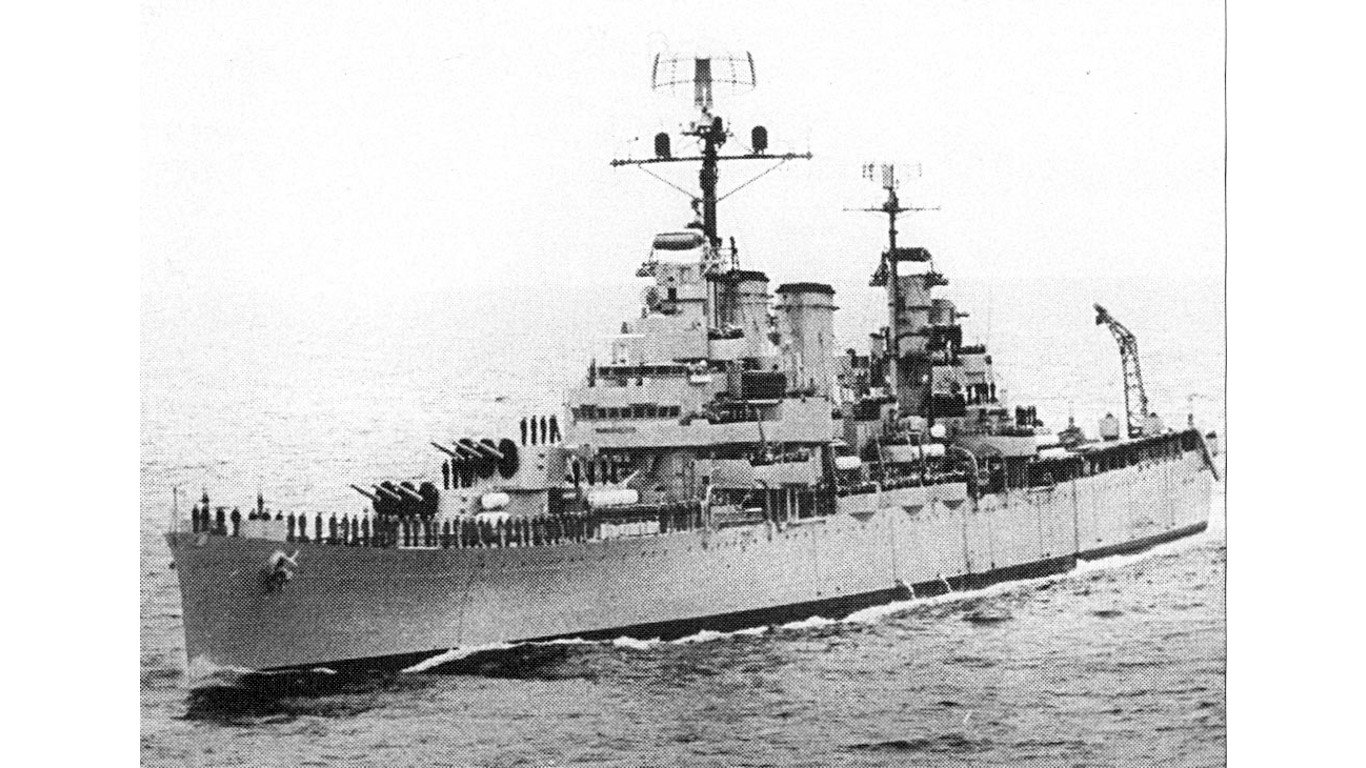
7. Falklands Islands War
> Ships: ARA General Belgrano
> Nations involved: Argentina and UK
> Date: May 2, 1982
> Conflict: Falklands War
ARA General Belgrano was an Argentine cruiser, sold to the South American country by the U.S. Navy during the Falklands War. The war began with the Argentine invasion of the Falkland Islands, which were U.K. territories and lasted from April 2 – June 14, 1982. ARAGeneral Belgranowas was considered among the largest threats to the Royal Navy. It was sunk on May 2, 1982, by a British submarine. Over 300 lives were lost. Without the ship, the effectiveness of the Argentine military effort was badly crippled, and they kept most of the balance of its ships in port.
[in-text-ad-2]

6. Sinking of USS Indianapolis
> Ships: USS Indianapolis
> Nations involved: Japan and US
> Date: July 30, 1945
> Conflict: World War II
The Indianapolis, a heavy cruiser, delivered internal components for the atomic bombs dropped on Hiroshima and Nagasaki in Japan. A Japanese submarine sank it on June 30, 1945. Over 500 men died, many of them from shark attacks. Among the horrible lessons of the Indianapolis is that the Navy could completely lose track of one of its largest ships for an extended period. It took five days for the first rescuers to find the ship.
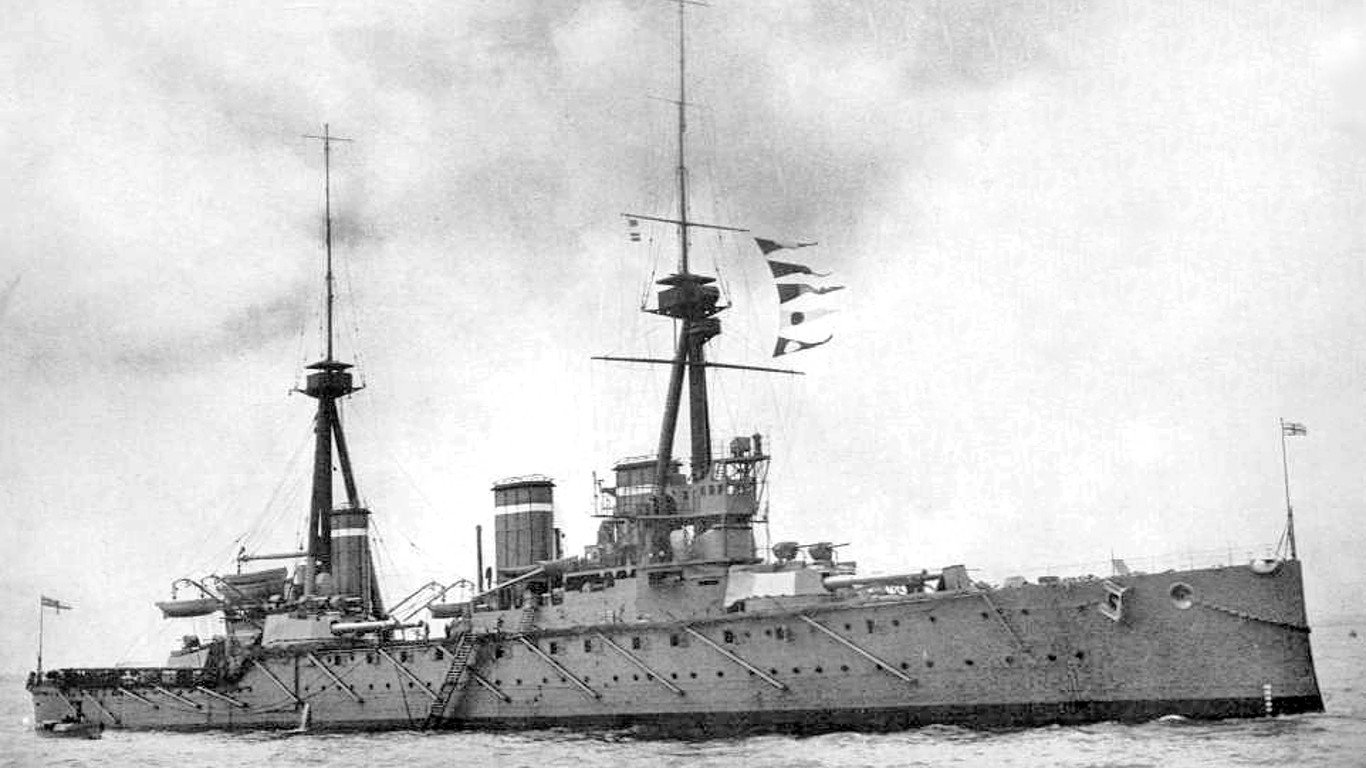
5. Battle of Jutland
> Ships: HMS Invincible
> Nations involved: Germany and UK
> Date: May 31 – June 1, 1916
> Conflict: World War I
One of the greatest sea battles of all time was the Battle of Jutland in World War I. Fought between the German and British navies, one result was the destruction of the huge HMS Invincible. Between the British and German navies, over 8,000 men were killed. The sinking of the Invincible proved that battleships, considered nearly indestructible, could be sunk in a matter of minutes when hit in areas where they kept munitions.
[in-text-ad]

4. Battle of the Nile
> Ships: Orient
> Nations involved: France and UK
> Date: Aug. 1-3, 1789
> Conflict: Campaign of the French Revolutionary Wars
Napoleon hoped to heavily damage the British Navy, which was the primary threat to his control of the major ports around Europe. The Orient was the French flagship during The Battle of the Nile. Fought on Aug. 1-3, 1789, the British fleet was under the command of Horatio Nelson, one of the most important officers in British naval history. The British had 13 ships to the French 14. One of the key moments of the battle was when the Orient exploded, leaving the French without their largest ship.
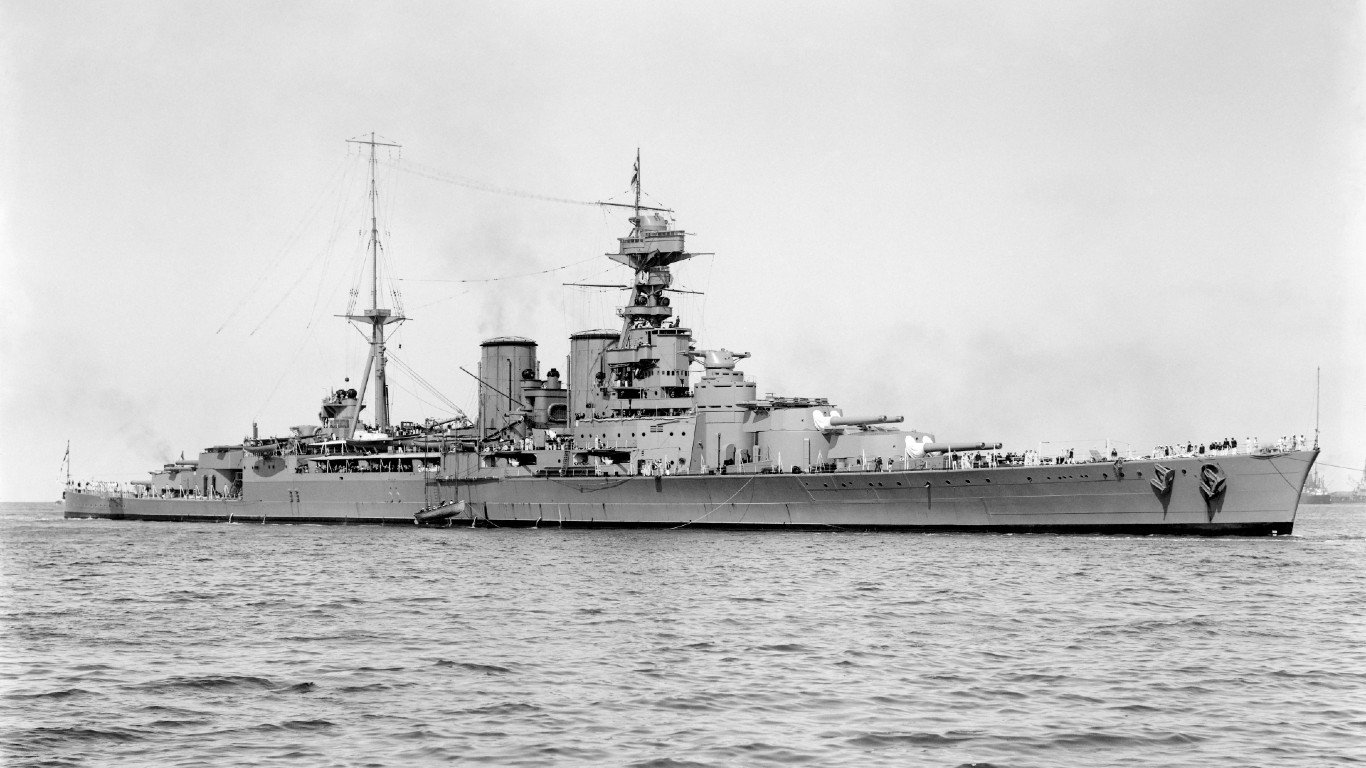
3. Bismarck engagement
> Ships: HMS Hood, Bismarck
> Nations involved: Germany and UK
> Date: May 27, 1941
> Conflict: World War II
The Bismarck was the pride of the German navy. Launched in 1939, it had huge 15 inch guns. In early 1941, the British decided to pursue and sink the Bismarck so it could not menace the Atlantic shipping lanes with North America. In the Battle of the Denmark Strait, the Bismarck sank the U.K. battlecruiser HMS Hood on May 24. Over 1,400 sailors were killed. British ships found the Bismarck and sank it three days later, killing another 2,200 men.
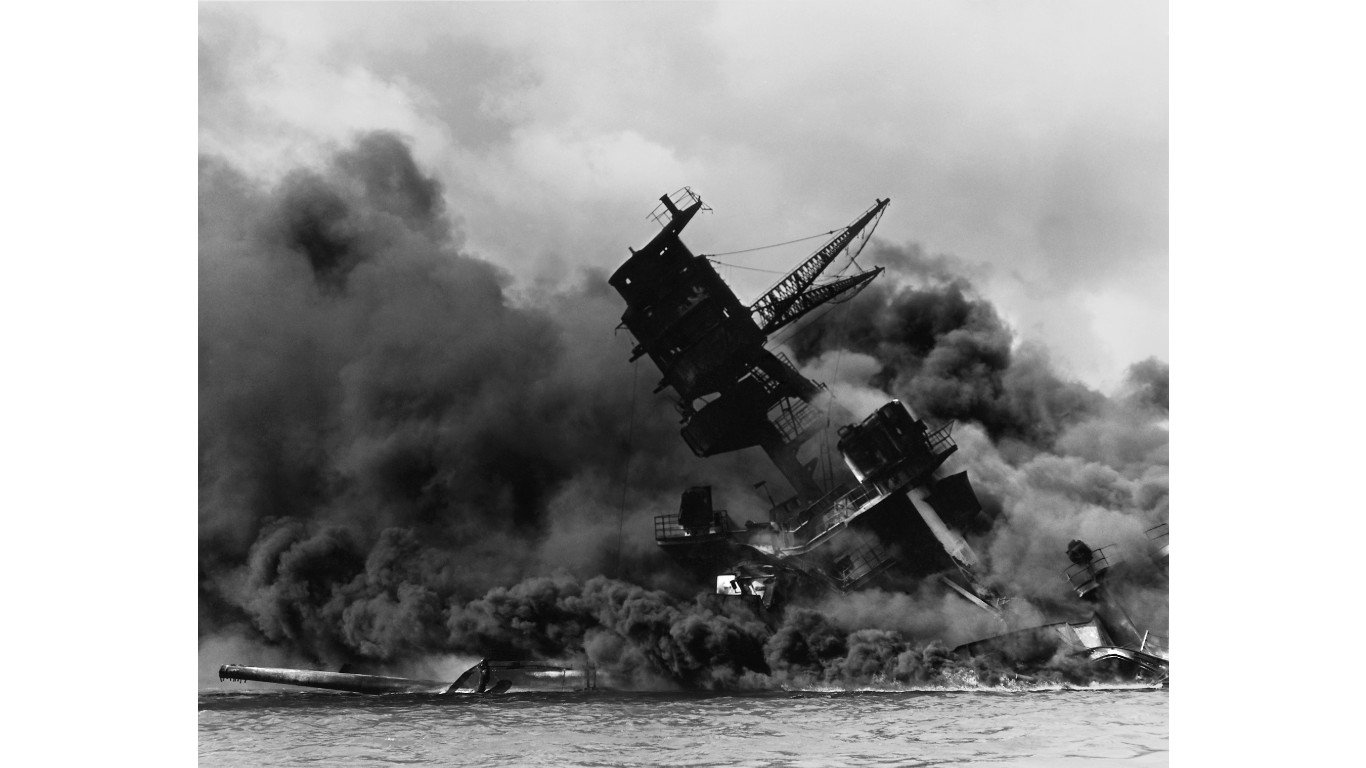
2. Pearl Harbor
> Ships: 8 American battleships (nearly 20 vessels in total)
> Nations involved: Japan and US
> Date: Dec. 7, 1941
> Conflict: World War II
By far the largest disaster in American naval history, the bombing of the Hawaiian naval base of Pearl Harbor on Dec. 7, 1941 was the event that brought the U.S. into World War II. Over 2,400 Americans were killed. The surprise attack by the Japanese damaged a number of ships, including eight battleships that were the pride of the U.S. navy. Without the USS Arizona, USS Oklahoma, USS West Virginia, USS California, USS Nevada, USS Tennessee, USS Maryland, USS Pennsylvania, the disaster left America almost defenseless in the Pacific.
[in-text-ad-2]
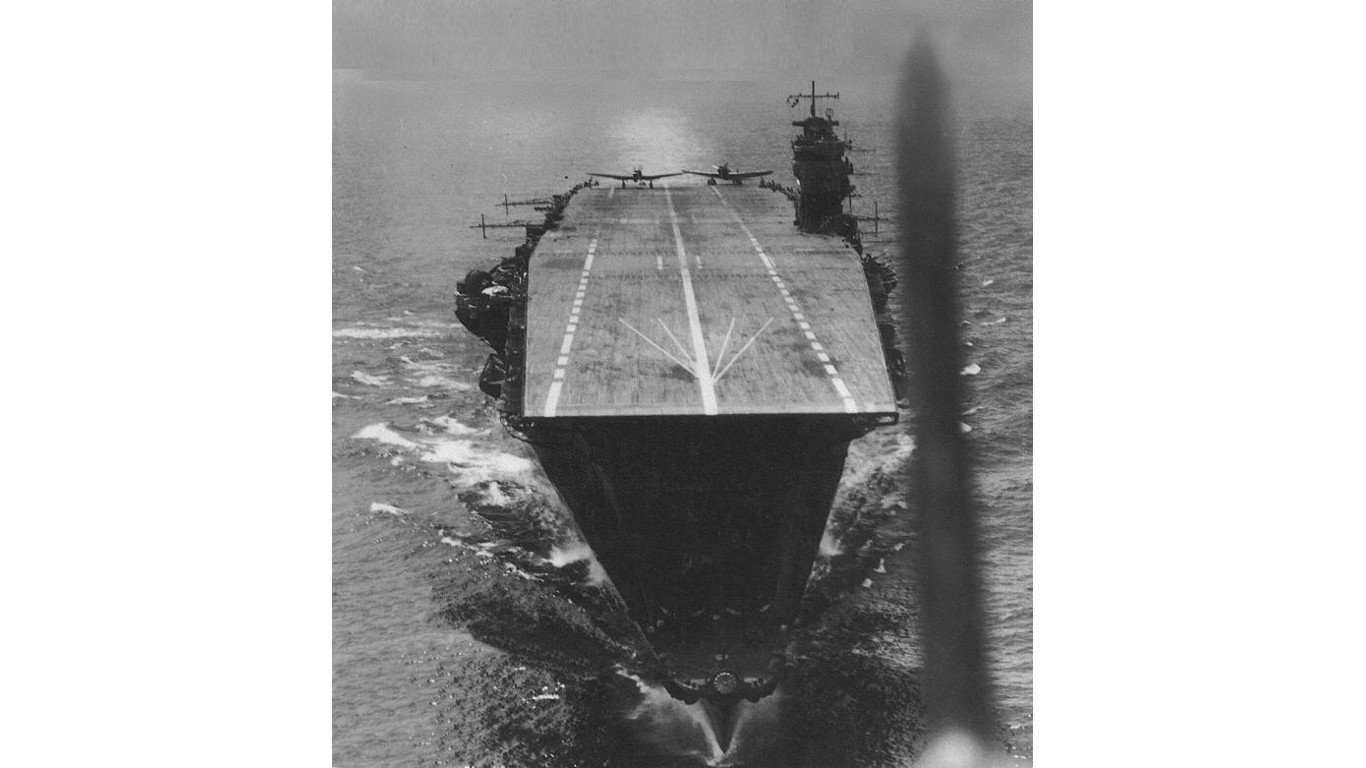
1. The Battle of Midway
> Ships: Japanese aircraft carriers Akagi, Kaga, and Soryu
> Nations involved: Japan and US
> Date: June 3-6, 1942
> Conflict: World War II
The Battle of Midway was fought between aircraft carriers of the Japanese and American navies. The battle was critical to the fate of which country would control the Pacific Ocean. The U.S. Navy was almost completely crippled by Pearl Harbor. If the Japanese had won the engagement, it would require years for America to retake the Pacific, if it could at all. Nations involved: Japan and U.S.
Take This Retirement Quiz To Get Matched With An Advisor Now (Sponsored)
Are you ready for retirement? Planning for retirement can be overwhelming, that’s why it could be a good idea to speak to a fiduciary financial advisor about your goals today.
Start by taking this retirement quiz right here from SmartAsset that will match you with up to 3 financial advisors that serve your area and beyond in 5 minutes. Smart Asset is now matching over 50,000 people a month.
Click here now to get started.
Thank you for reading! Have some feedback for us?
Contact the 24/7 Wall St. editorial team.
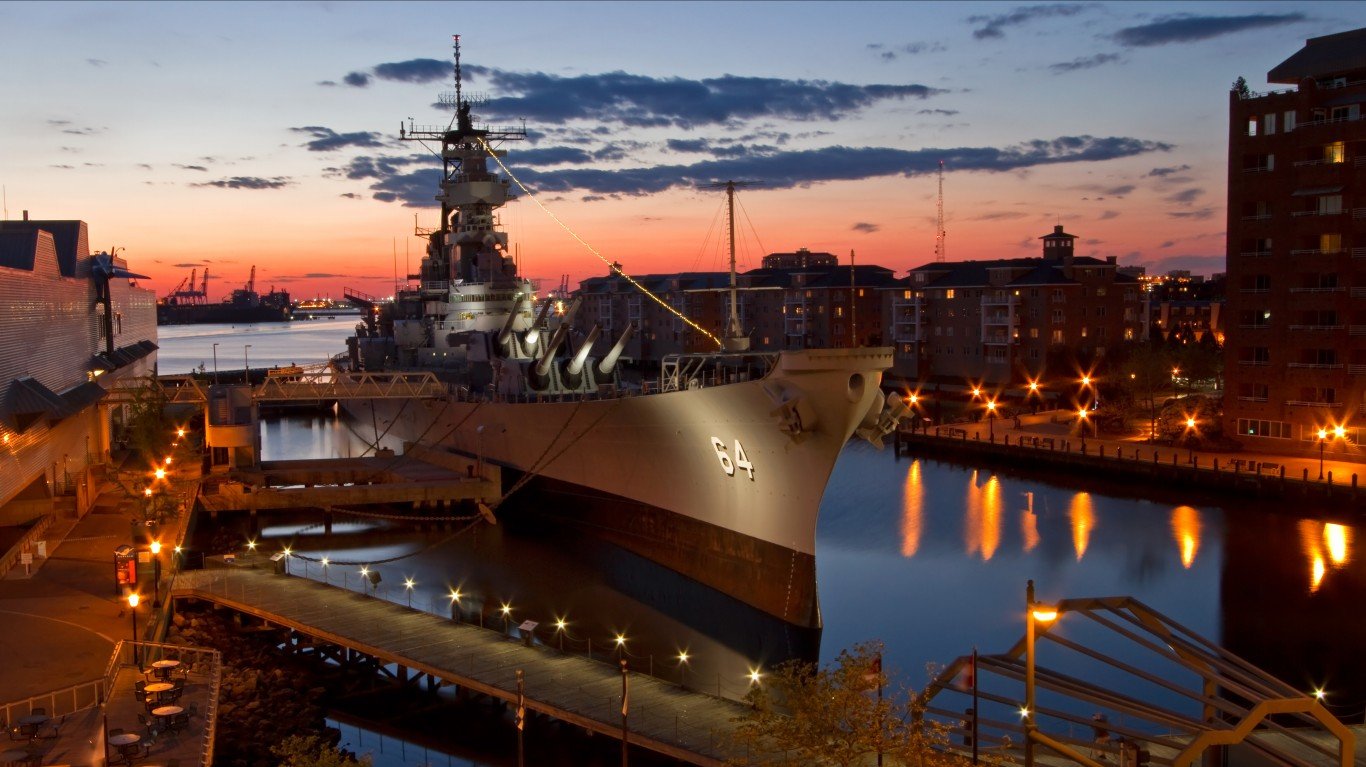 24/7 Wall St.
24/7 Wall St.